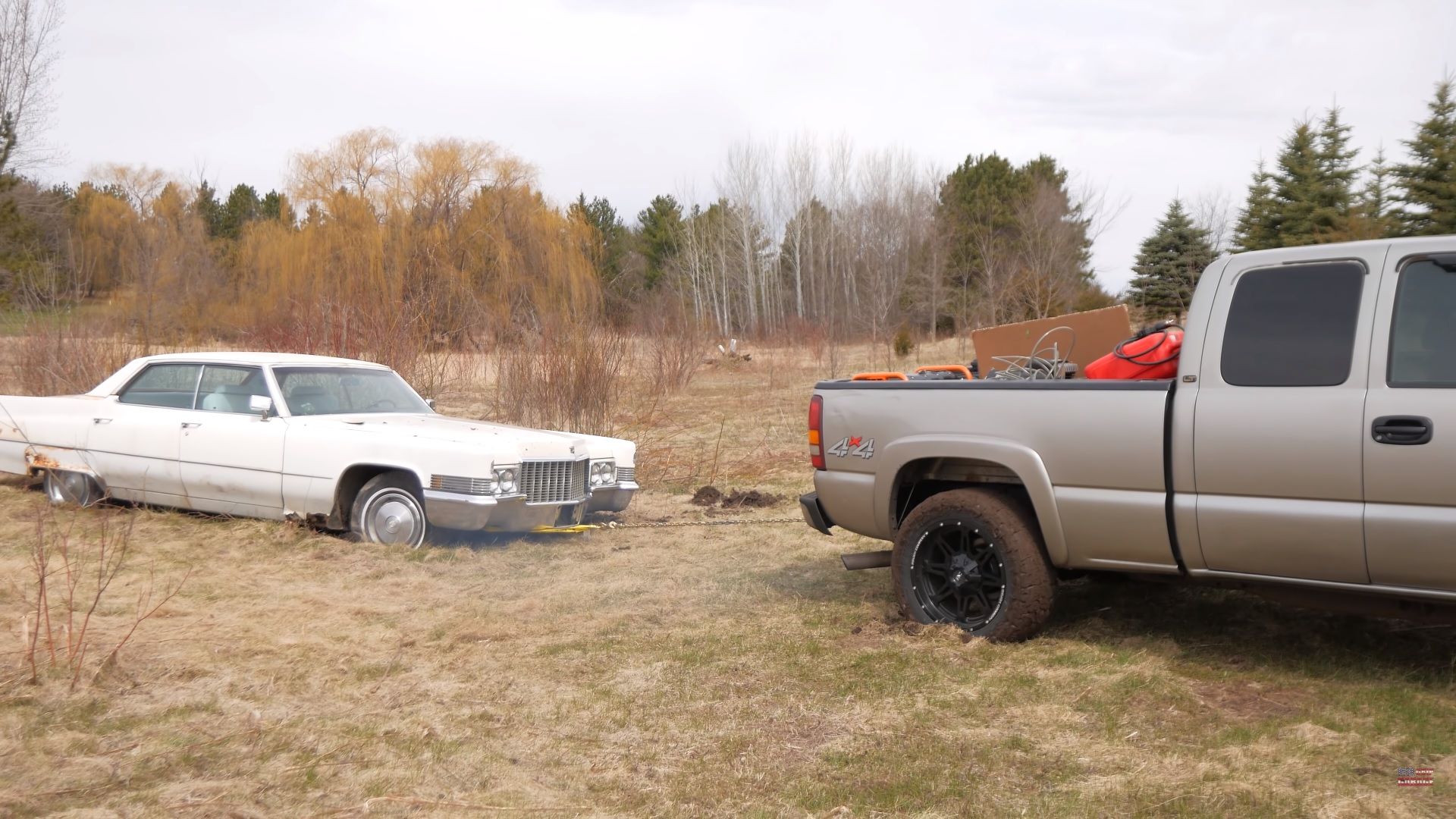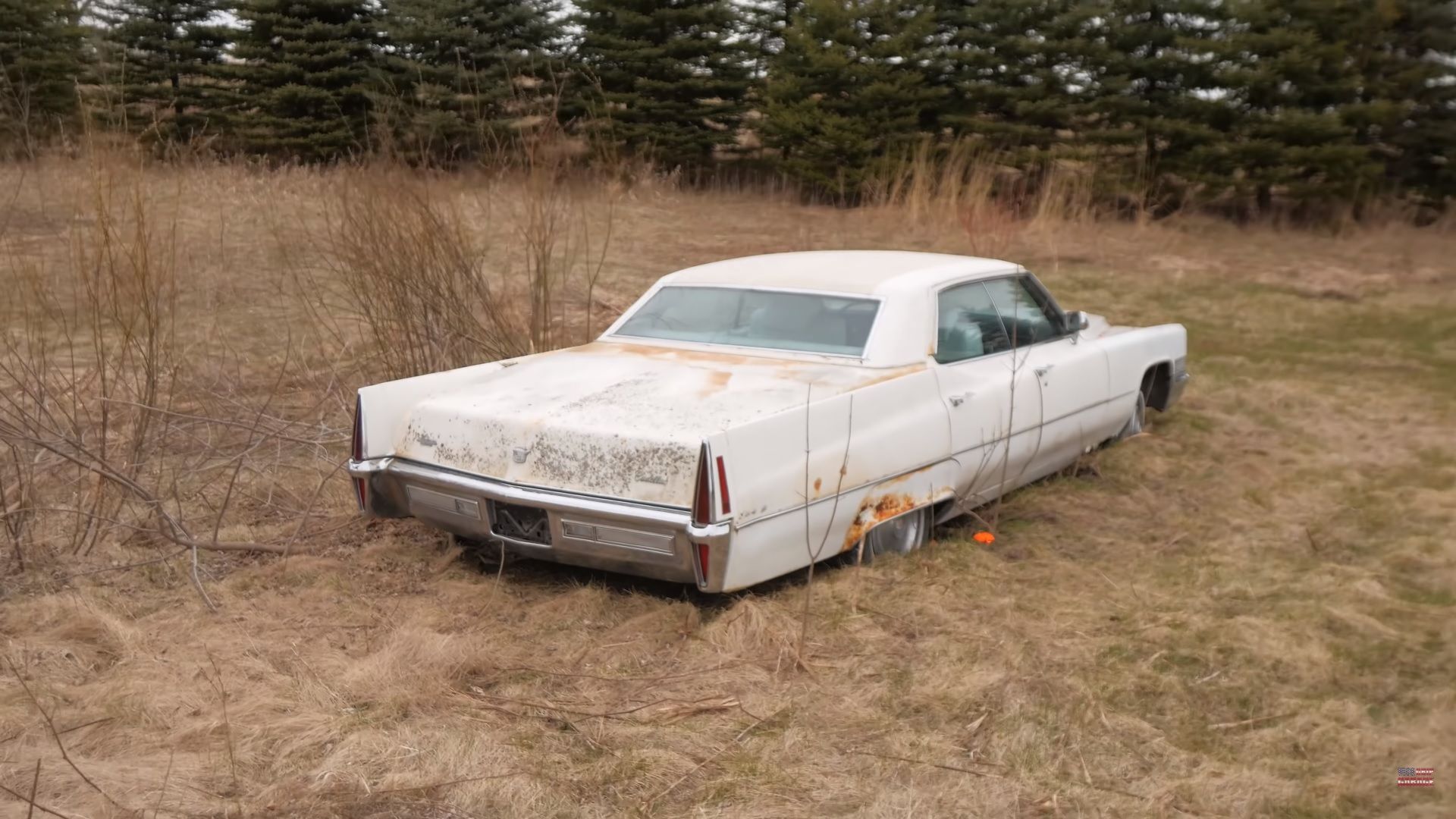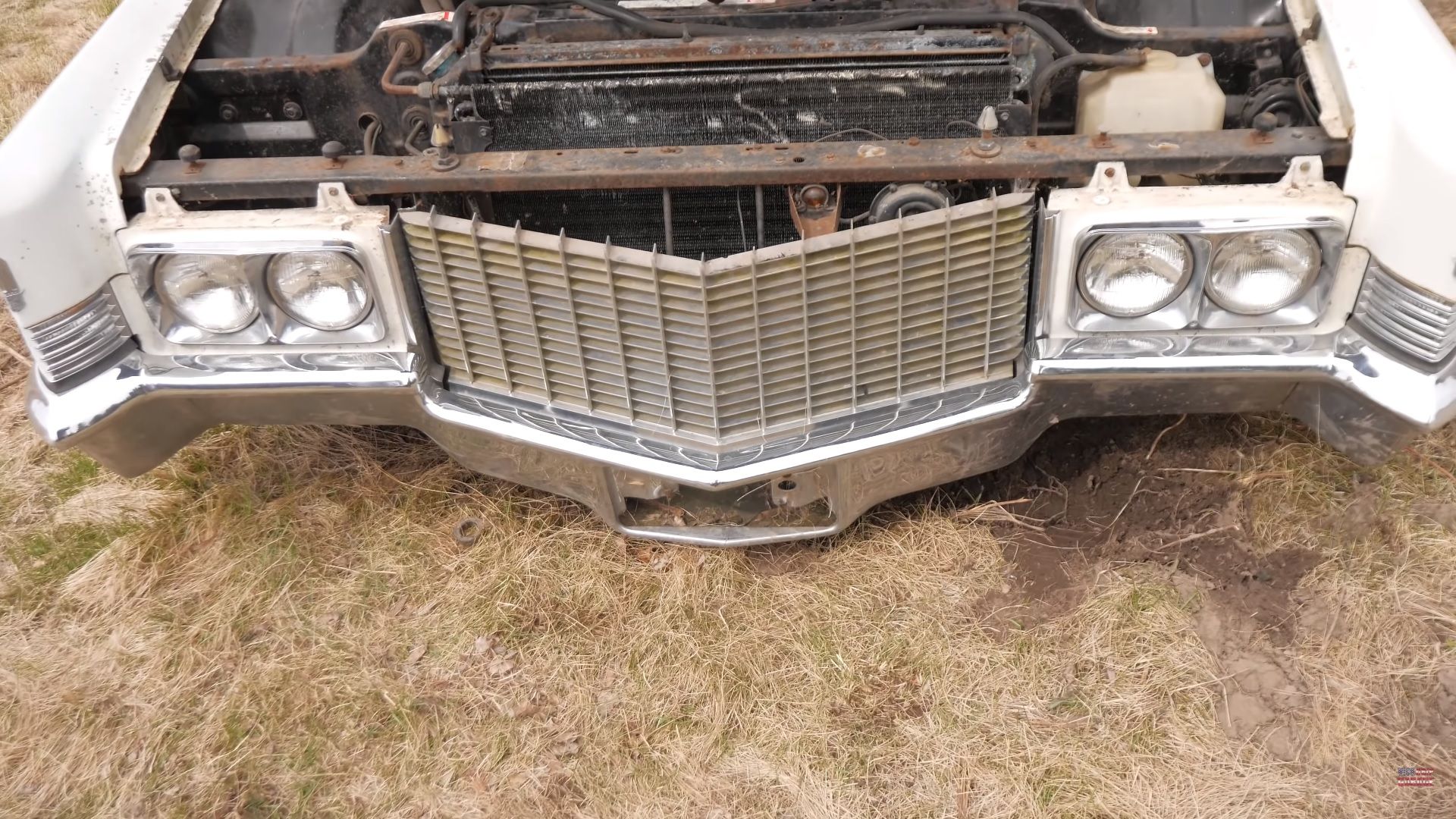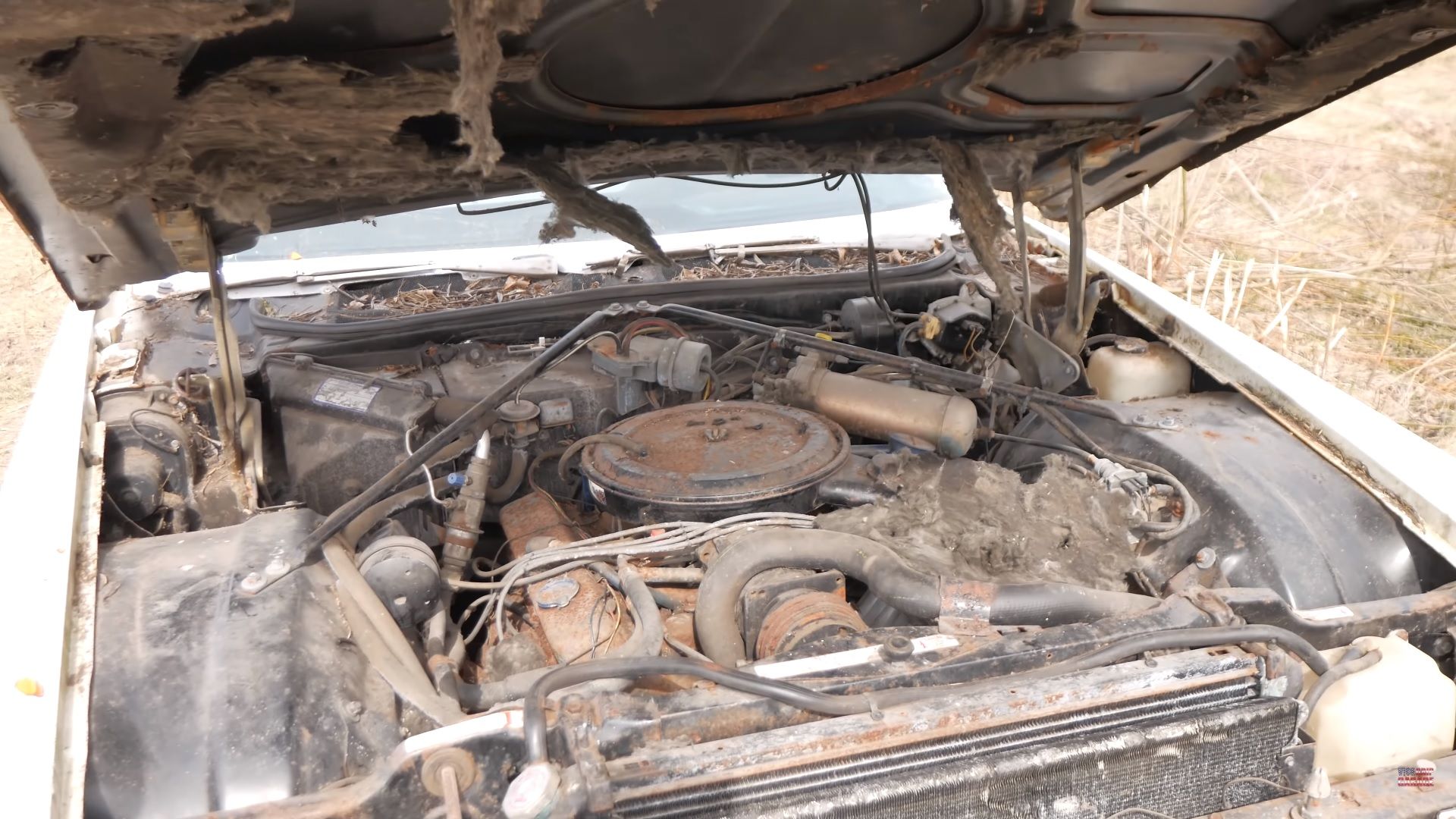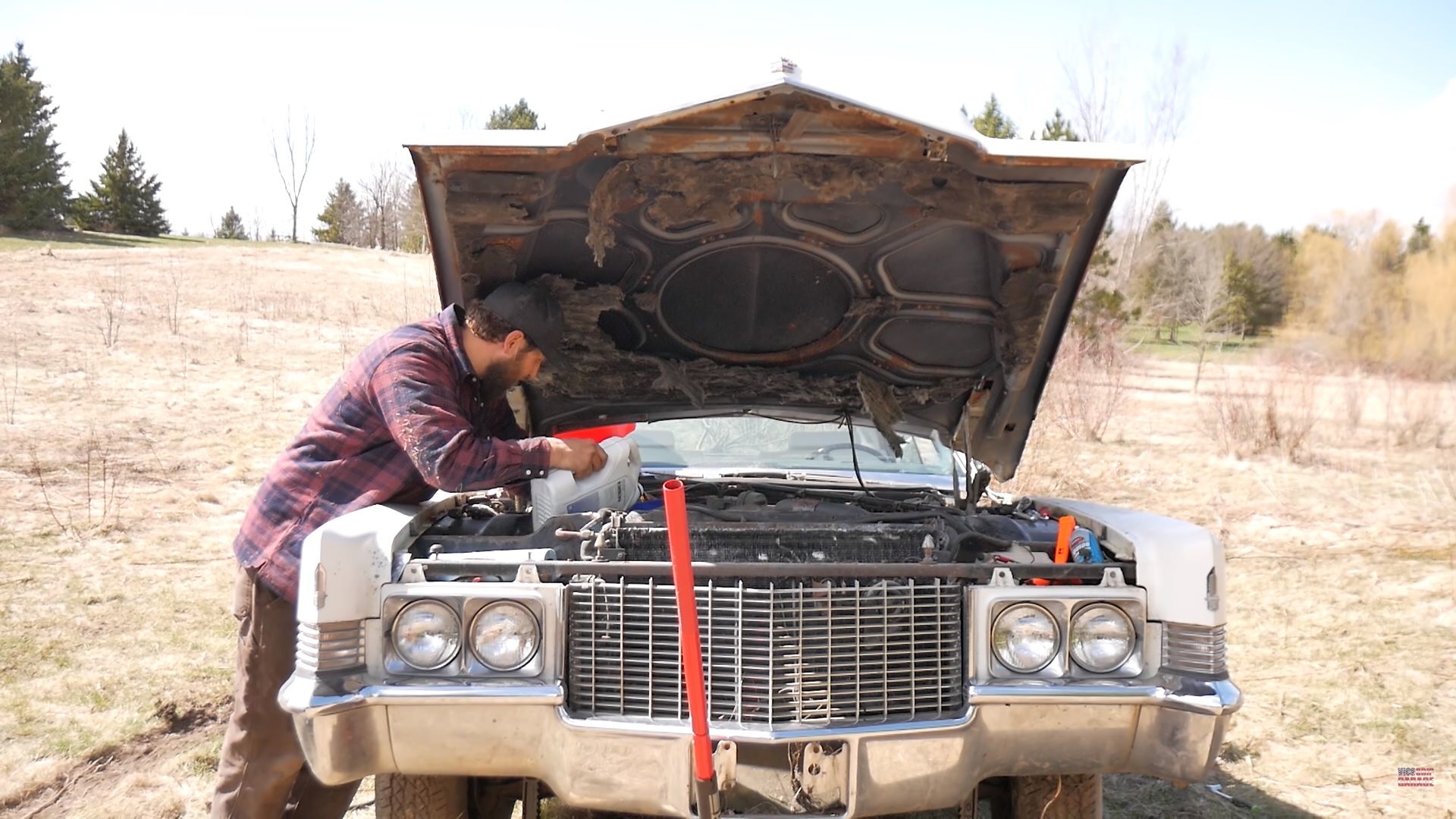Most people would tell you not to buy a car with visible rust that's been sitting in a field since the Y2K but that's not what Vice Grip Garage is all about. No, Vice Grip's mission is to save as many cars as possible and the fact that this Caddy's been sunk in a valley bottom all the way to the chassis isn't a good enough reason to not rescue it.
Saving a '70s icon is just about the noblest thing you could do
Cadillac was doing good back in 1970, so good, in fact, that it moved a whopping 238,745 cars that year, a new divisional record. 83,274 of those were Hardtop Sedan DeVilles that started at $6,118 or about $40,427 today.
Derek Bieri of Vice Grip Garage didn't pay nearly as much to get his hands on the white example you see here but there's a catch: the car hadn't moved for two decades and it was stuck in a muddy field, potentially housing rodents and certainly rusting away at the mercy of the elements. All of that would probably deter you and me but not Bieri who jumped at the opportunity to save an American classic.
In the hour-long video, the popular YouTuber will: A) show you how to dig up a car that's stuck in some loose terrain (hint: breathing air into the tires helps before you start digging up), and B) how to get the said car going and then effortlessly drive it down the highway at 90 mph ignoring a seized caliper and multiple puffs of smoke. All while showering you with dry humor (unlike all that mud).
The car turns out to be in better shape than Bieri had expected, which is why he takes a chance and actually drives it home. However, as he advises at the beginning of each one of his videos, "I'm an idiot. Do what I do at your own risk. Don't take my advice unless you're really super desperate."
In other words, you may want to get a trailer if you too happen to stumble upon a '70s relic that's been sitting out in the open for decades. If not, just watch the whole video (the car comes to life around the 30-minute mark) and hope your rusty find doesn't come with a busted floor or ruined internals.
The 1970 DeVille, old school class par excellence
Some say that 1970 was the last year of the proper old-time Cadillac, the one that became known as "America's Favorite Luxury Car" and the "Standard of the Entire World."
The third-generation DeVille that'd been around since 1965 retired at the end of 1970 and, as such, 1970 was the last year for the convertible body style and the last for pillared sedans until hardtops were permanently dropped in 1977. Appearance-wise, the biggest difference between a '69 DeVille and a '70 DeVille is the grille in the front that sported 13 vertical blades scattered in front of an egg crate mesh. In the back, the pointy, vertical taillights reigned supreme with the reverse lights nestled within the thick, chromed bumper.
As you'd expect, these cars were huge. With almost 130 inches between the wheel arches, a 1970 DeVille measured 225 inches end to end. This meant that completing a three-point turn was a nightmare, especially given the 38.5-degree turning radius. The upside was that the plush suspension absorbed each and every bump, as you'd expect from a 5,000-pound Caddy. Motivating the equivalent in weight of a pair of Mitsubishi Mirages was one engine, the enormous 7.7-liter, 16-valve 472 CI OHV V-8.
You'll also see Bieri in the video be impressed by the way the car skids away from its muddy Minnesota home. When new, these moving continents could do 0-60 mph in 8.1 seconds (the Mirage needs 12.2 seconds) and top out at about 130 mph. And, if anyone's curious, a 1970 DeVille in its prime could complete a quarter-mile run in under 16 seconds despite the fact that all the power sent to the back wheels goes through a GM Turbo-Hydra-Matic three-speed automatic transmission, a box decidedly set up to be smooth, not sporty.
1970 Cadillac Deville specifications
|
Engine |
7.7-liter, 16-valve 472 CI OHV V-8 |
|---|---|
|
Horsepower |
375 HP @ 4,400 RPM |
|
Torque |
525 LB-FT @ 3,000 RPM |
|
0 to 60 mph |
8.1 seconds |
|
Top Speed |
130 mph |
As all the other Cadillacs back then, the DeVille Sedan Hardtop is of the body-on-frame variety with the bodies for some of the models including the Coupe done by Fisher. To stop these things, Cadillac patented the so-called "Triple Braking System" comprised of a dual hydraulic master cylinder that was there to offer independent braking for all four wheels (if one system failed, the other kicked into action).
While there were disc brakes in the front, the finned drums in the rear were up to the task if you don't forget you're in a full-size sedan with tons of sheet metal everywhere (in fact, by '71, Cadillac would use less sheet metal and lest custom fabrication on its cars to cut costs). A new rear axle was in place for 1970 and it made the car even quieter when driven down the road and it also meant that you had more room inside as the driveline was lower.

